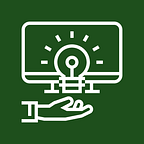Task Manager explained: What is Task Manager and what does the data displayed mean?
Very often, when issues with your computer occur, techie tutorials around the web mention ‘Task Manager’ and the different things to do within it to solve the issue you are facing.
In this tutorial, I will provide you with all the necessary information so next time someone mentions ‘Task Manager’, you will feel like a techie! 🙂 We will cover the three most useful tabs within Task Manager to learn about — Processes, Performance and Startup.
What is Task Manager?
In simple terms, Task Manager is a Windows tool that allows you to see a consolidated view of all processes and programs running on you computer, the resources they utilize and your current overall resource usage. This monitoring tool also allows you to set up what programs run automatically at start-up and gives you the option to end programs and processes currently running. To open Task Manager, press Ctrl + Shift + Esc keys (CHECK OUT a tutorial of the most useful keyboard shortcut combinations) or search for ‘Task manager’ in your Windows start menu.
What is displayed in the ‘Processes’ tab?
In the ‘Processes’ tab, you will find information about the apps that you are currently running and all running background processes.
Note: If your Task Manager view is sorted by ‘Status’, you will not see a list categorized by ‘Apps’ and ‘Background processes’. To switch to a view like in the screenshot above, click on the ‘Name’ column to sort by it.
Apps
The ‘Apps’ category displays all the programs currently opened on your machine. On the right side, you will see four other columns:
CPU: This column includes information on the percentage of your CPU capacity that the program is using. The more demanding the app, the more CPU power it will require.
Memory: Computers use RAM (Random-access memory) type of memory to run programs. When a program is running, it often requires memory to operate (e.g. it stores your Word document as you are typing it). This columns specifies how much of the RAM memory your computer has is used by the given program.
Disk: The information displayed in this column is regarding the disk activity by the specified program. Programs require I/O (input/output) operations to run. This results in reading and writing to the disk. The more demanding a program is, the higher disk operation it will require.
Network: This column refers to the network usage by the given app.
To end any of the programs you have selected, simply click on the ‘End task’ in the bottom right corner.
Note: Closing programs via Task Manager is often required, especially if the given application has ‘frozen’ and clicking the X button does not do anything. To quickly close a program that is currently ‘frozen’, open Task manager, select the program and click ‘End task’
Background processes
The background processes displayed are all of the processes that run in the background (you don’t see them as opened programs) that are required by Windows and apps in order to run.
What information does ‘Performance’ tab have?
Performance tab is where you can see your overall resources utilization. The information is at ‘real-time’ so you see it being updated continuously.
There are five resources detailed in that tab:
CPU: Displays the current overall utilization of your CPU. This includes some more technical details like number of running processes and threads. You can also check your CPU’s up time — which basically translates to when you last shut down your computer :).
Memory: As mentioned previously, ‘Memory’ refers to the RAM of your machine. This is the place where you can see how much RAM in total is currently used and how much is available. The more programs you are currently running, the more RAM will be taken. Also, you might have only one app running, but if the software you are running is demanding (requires many resources to run), you will see high RAM consumption.
GPU: Refers to the usage of graphics card resources.
The ‘Startup’ tab
In the ‘Startup’ tab, you will see a list of all programs configured to automatically start when your computer is turned on. Beware: The more programs are set to automatically start up each time you turn on your machine, the slower your startup time will be.
To disable a program from starting automatically, simply select it and click ‘Disable’.
How to know which programs I can disable?
The general rule is that if you are unsure of what a program does, do not disable it, in case there is a particular usage for it. However, if you are aware of the program and you know that it is something that is not required to be automatically turned on, then disable it. (If you have a question regarding specific examples of which programs to disable, feel free to ask in the comments below — we usually answer within 24h!).
Thank you for reading and congratulations for being one step closer to becoming a techie! For further questions or suggestions, please leave a comment below!
You may also be interested to learn how you can improve the speed and performance of your computer.
Check out here for a useful guide on disabling startup applications via task manager.
